VERY RARE! WWII 1944 Operation Stalemate II - Palau Campaign (Koror & Arakabesan Islands) CONFIDENTIAL Combat Intelligence Invasion Maps (Double-Sided)

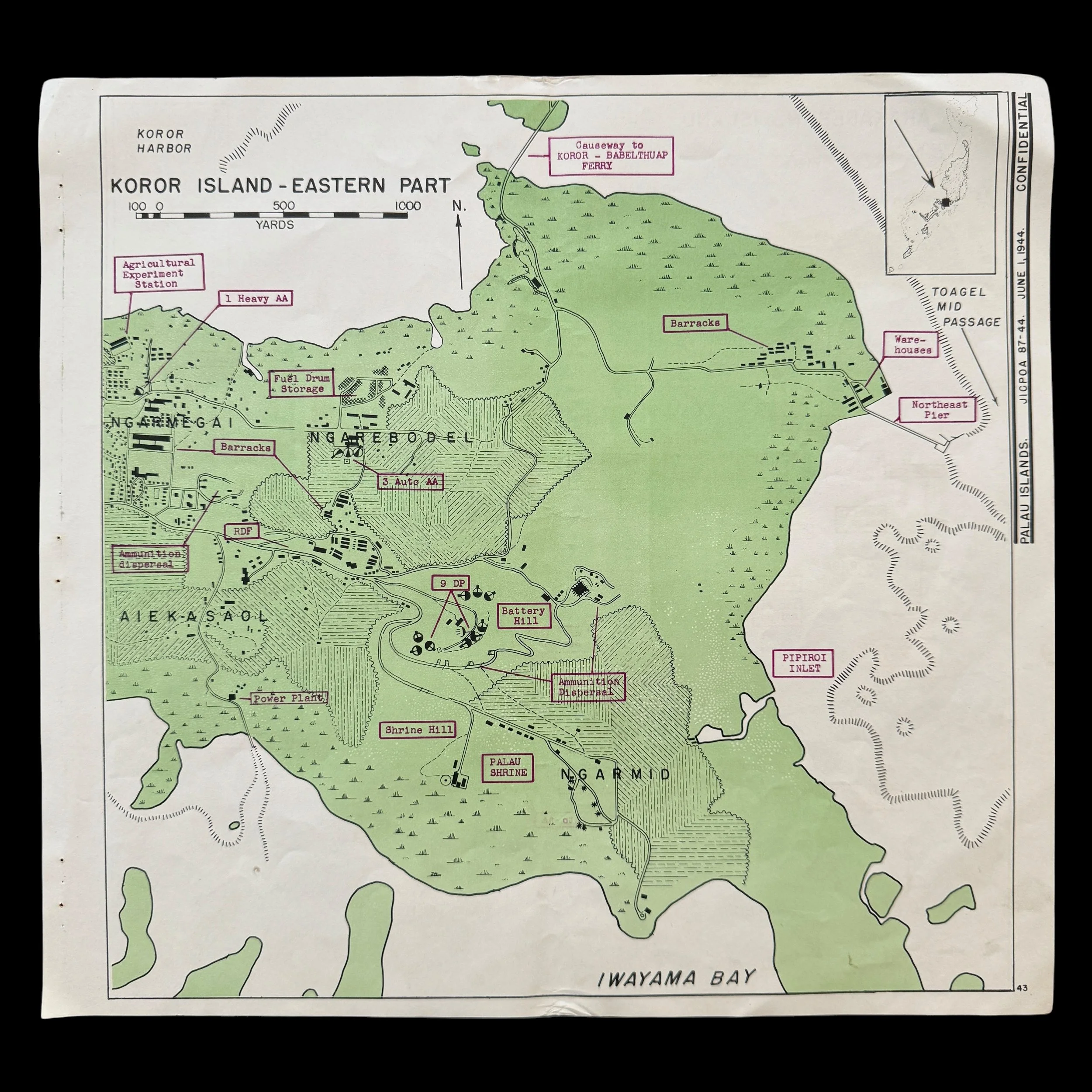
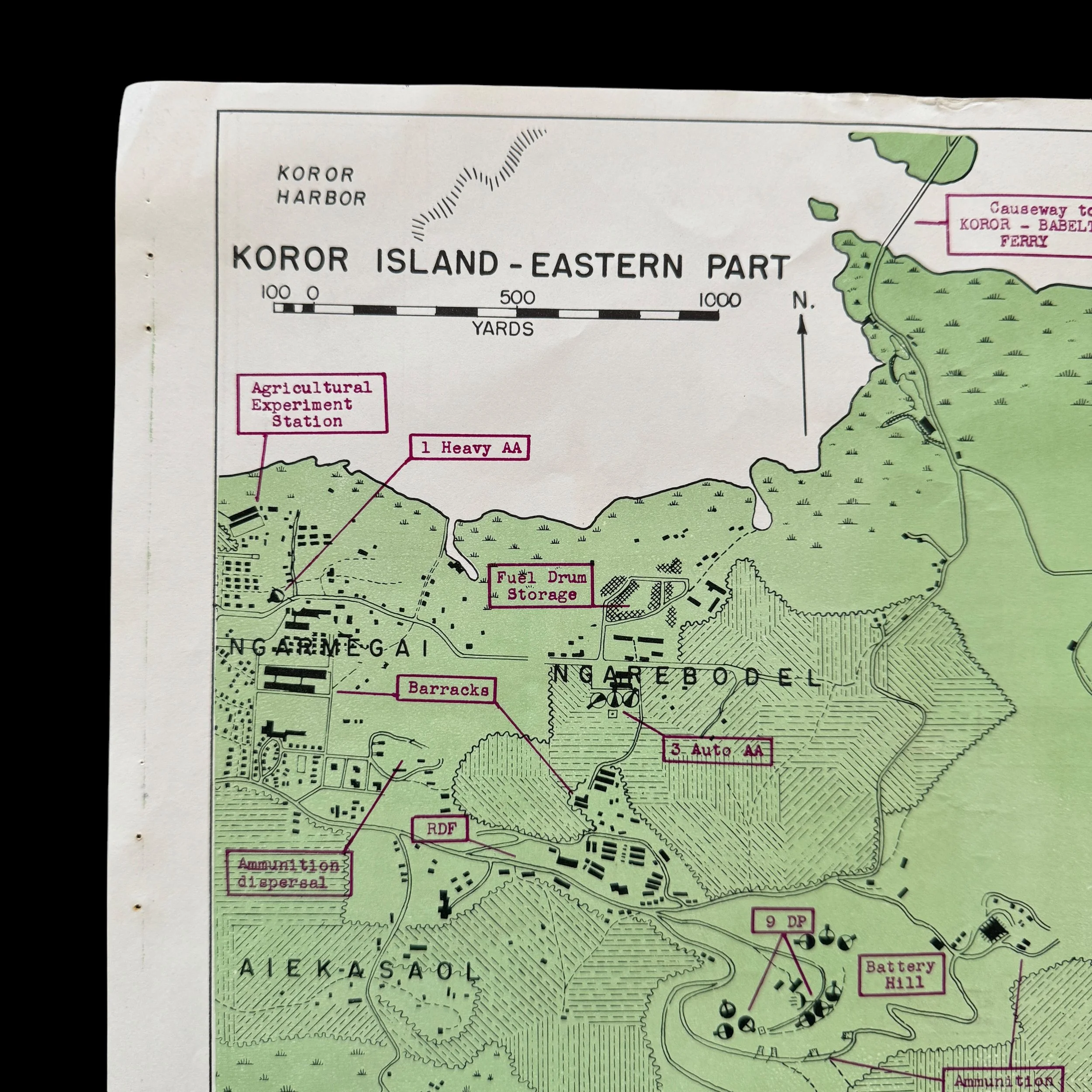
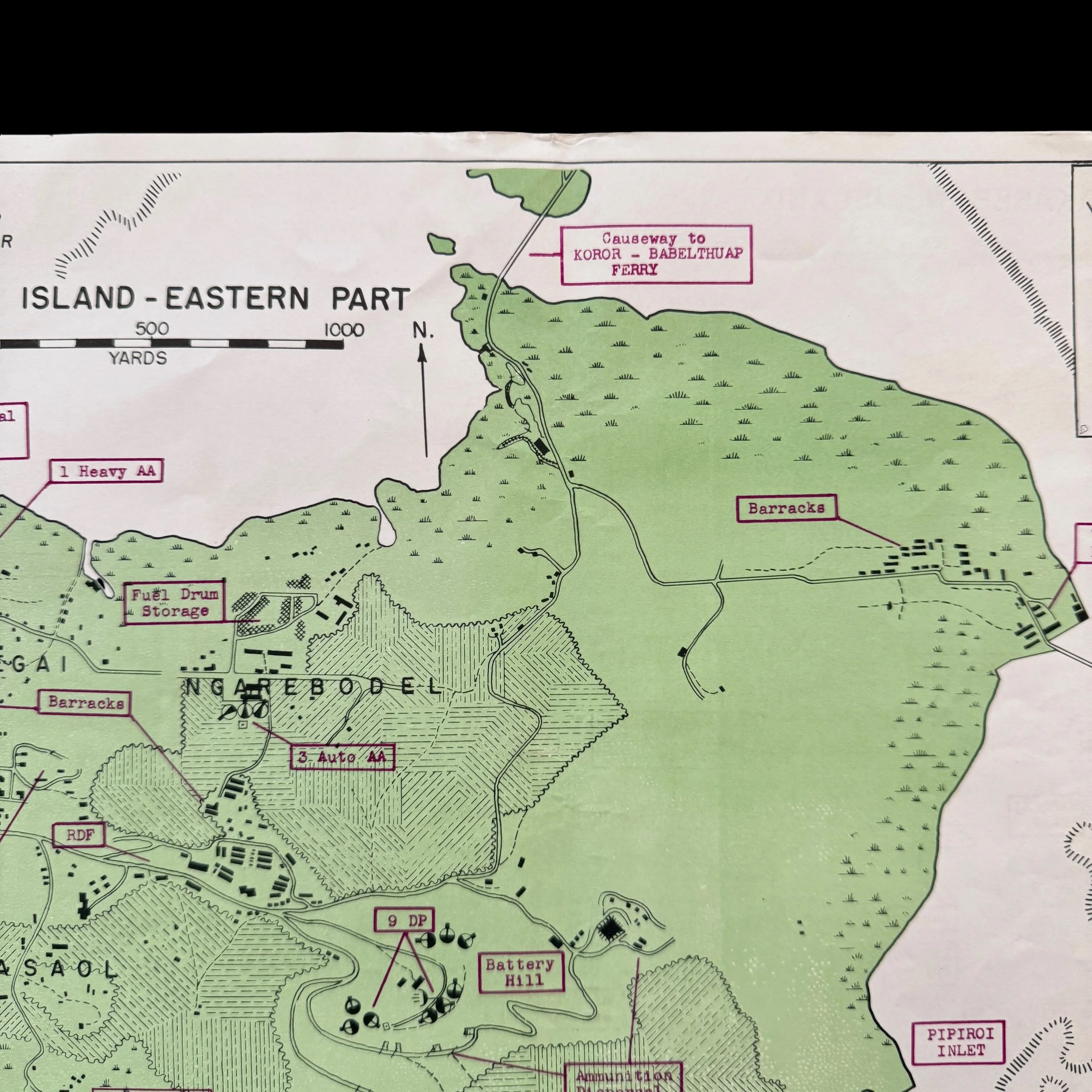
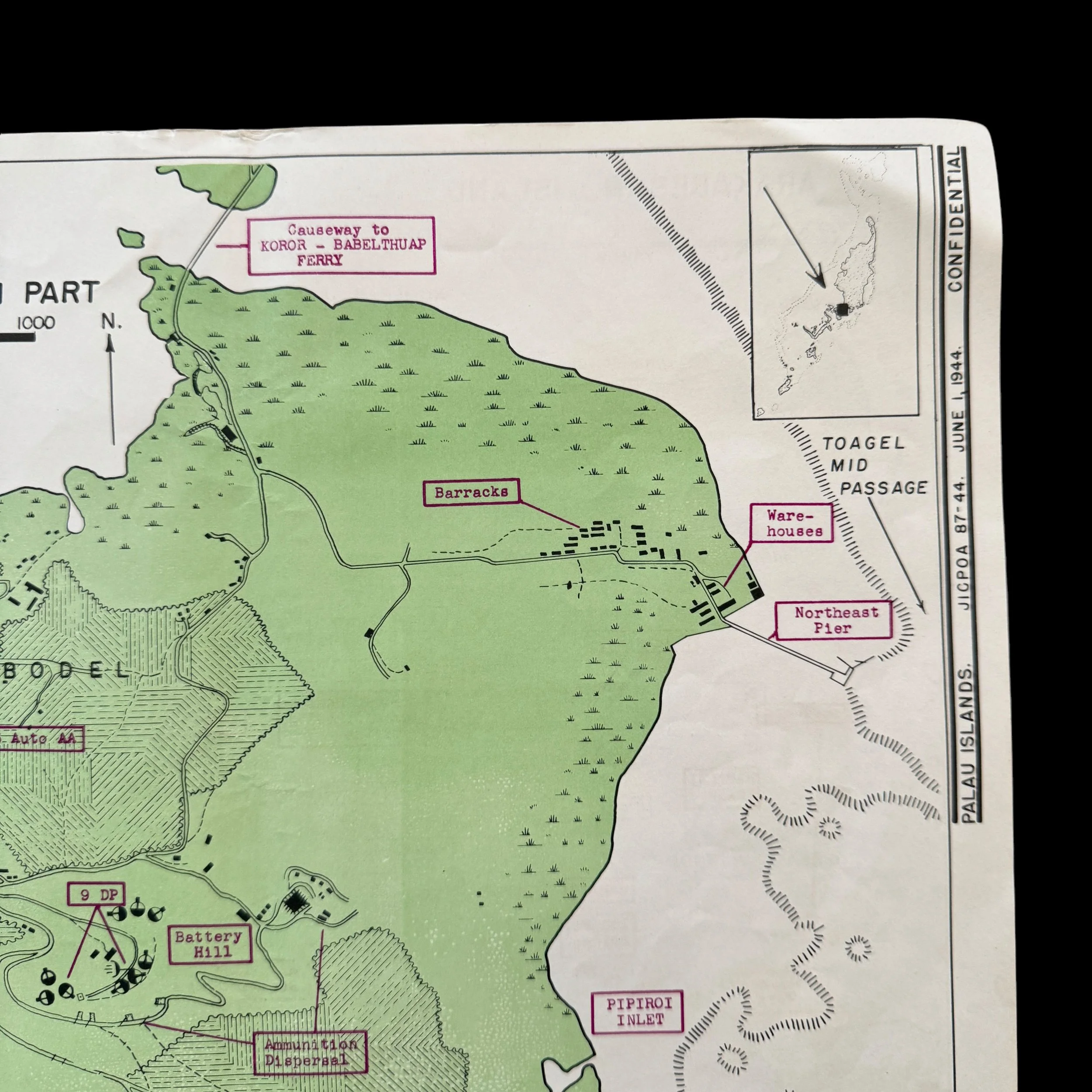

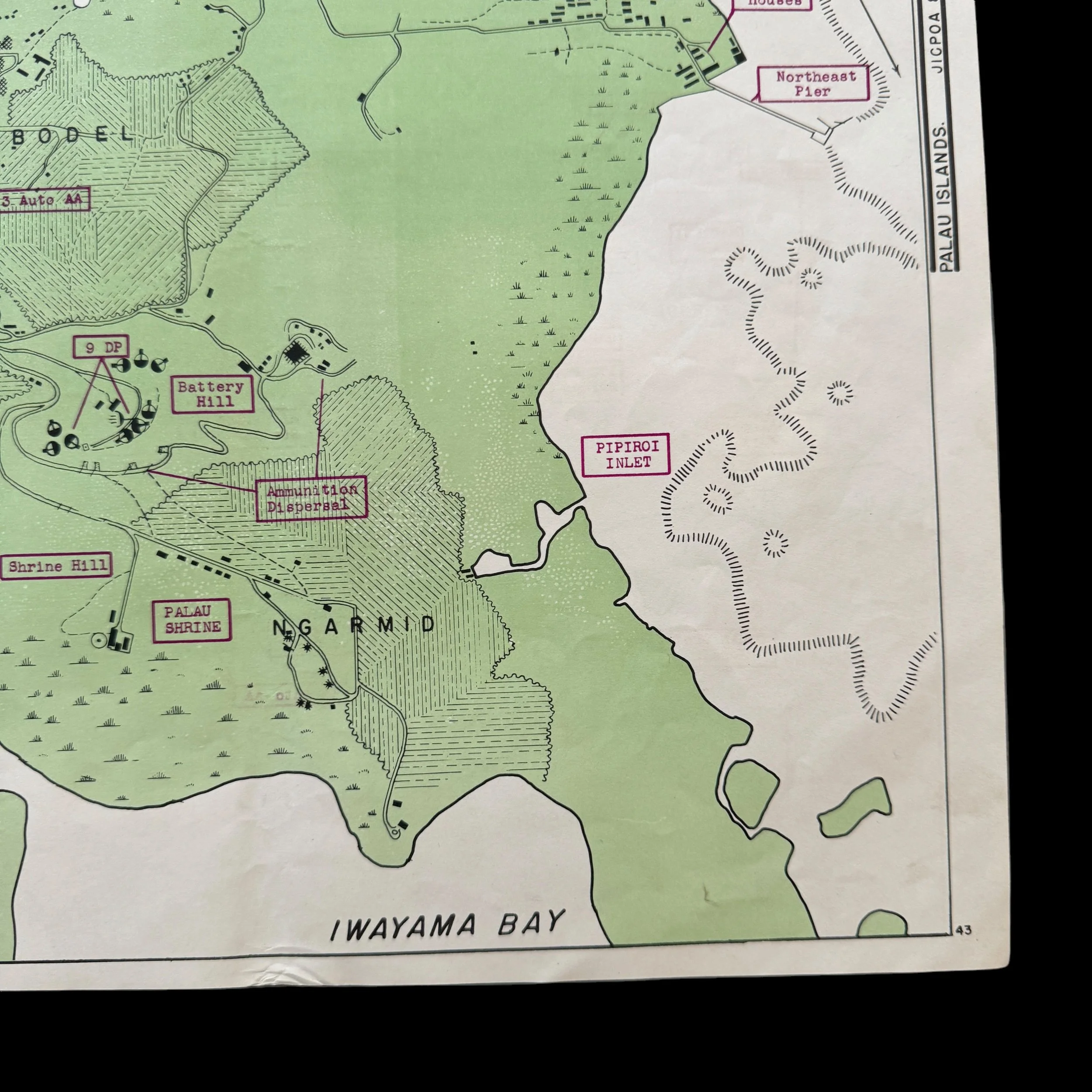
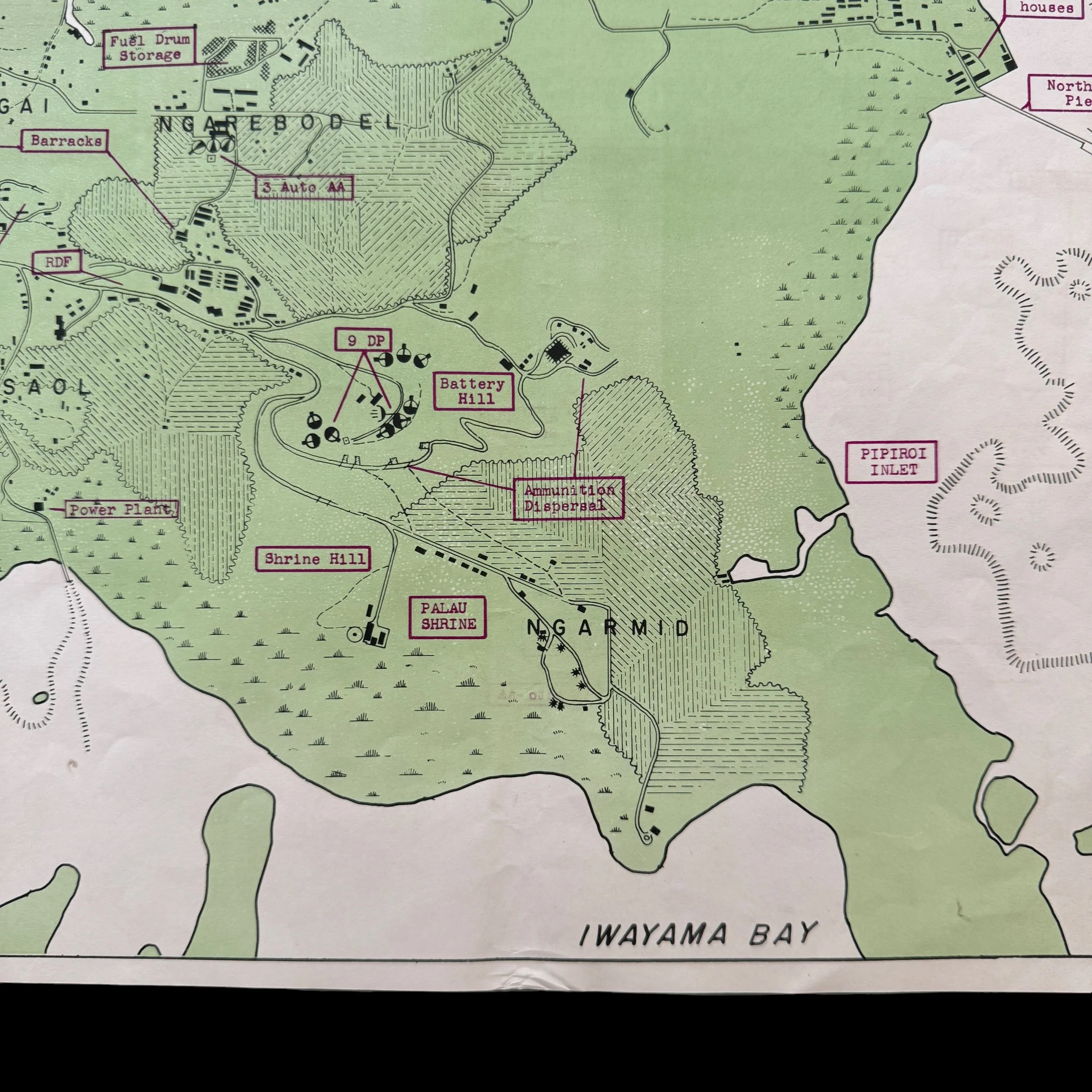
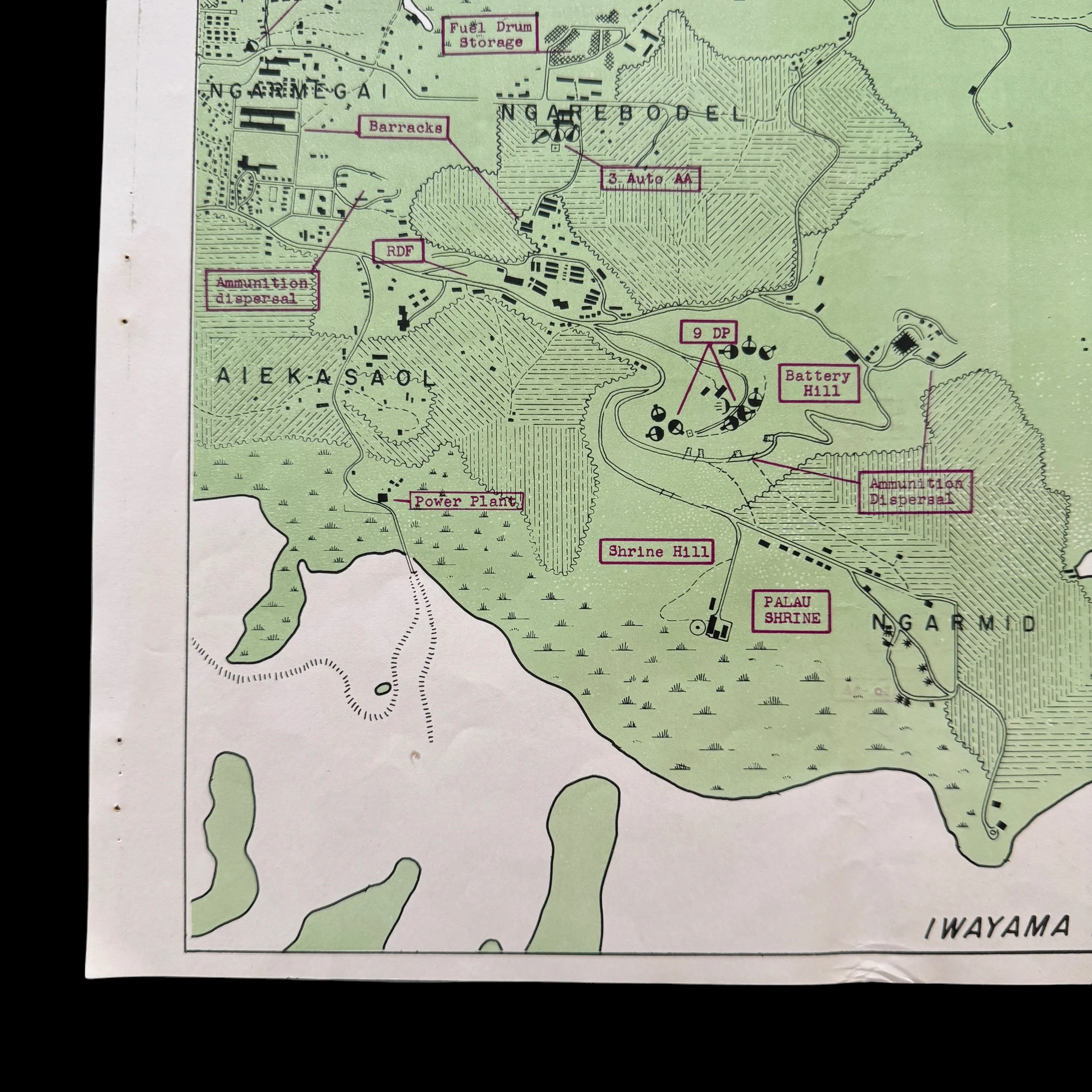
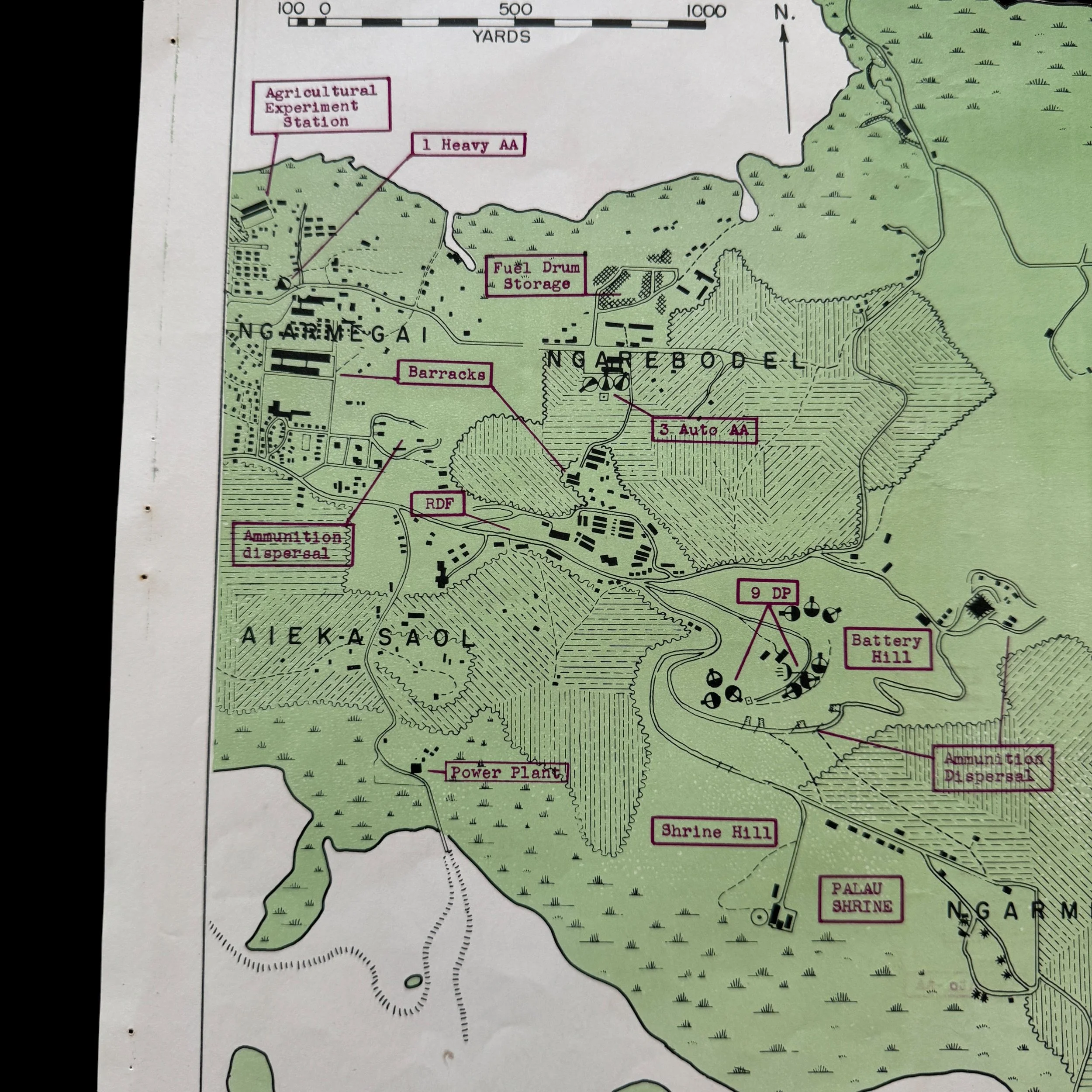
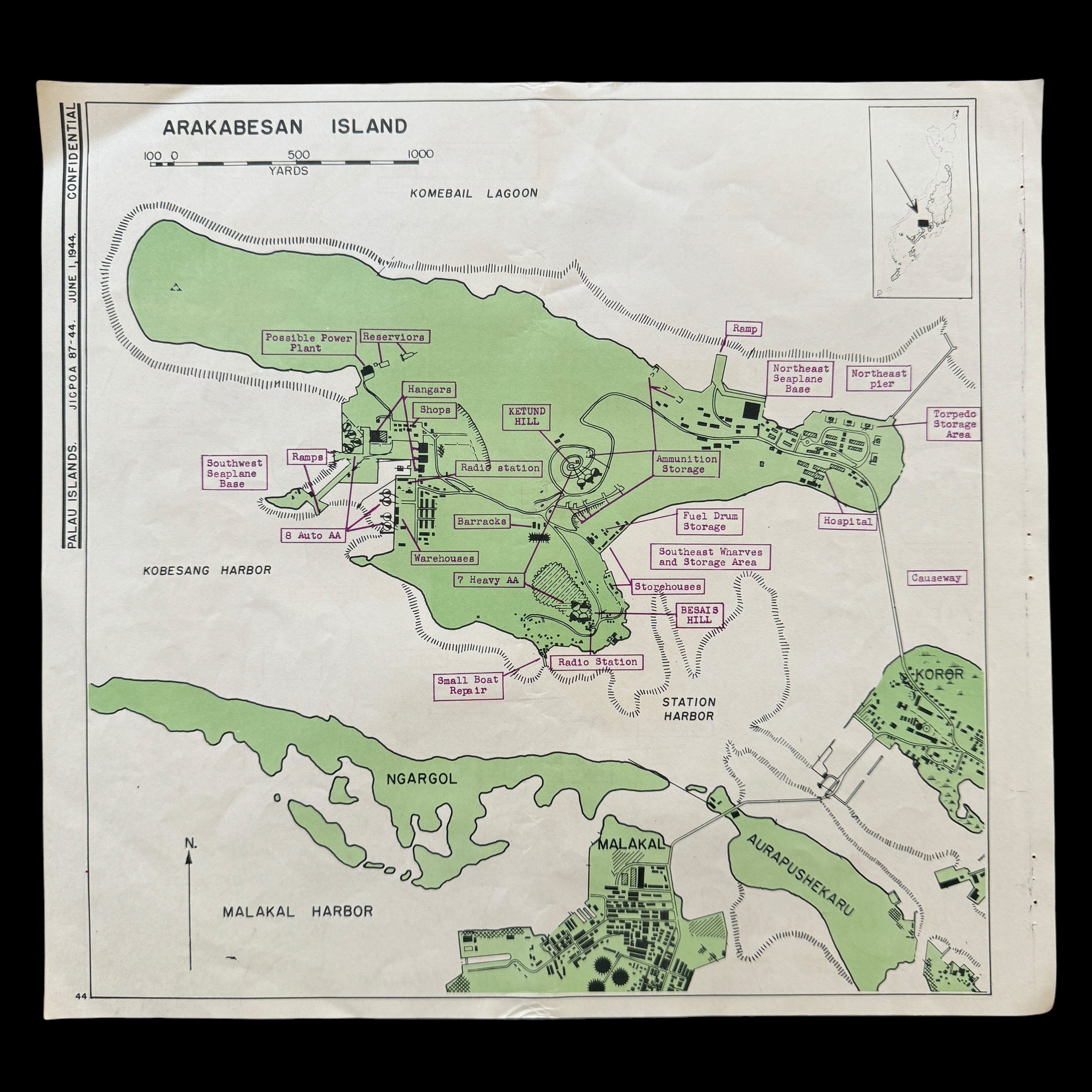
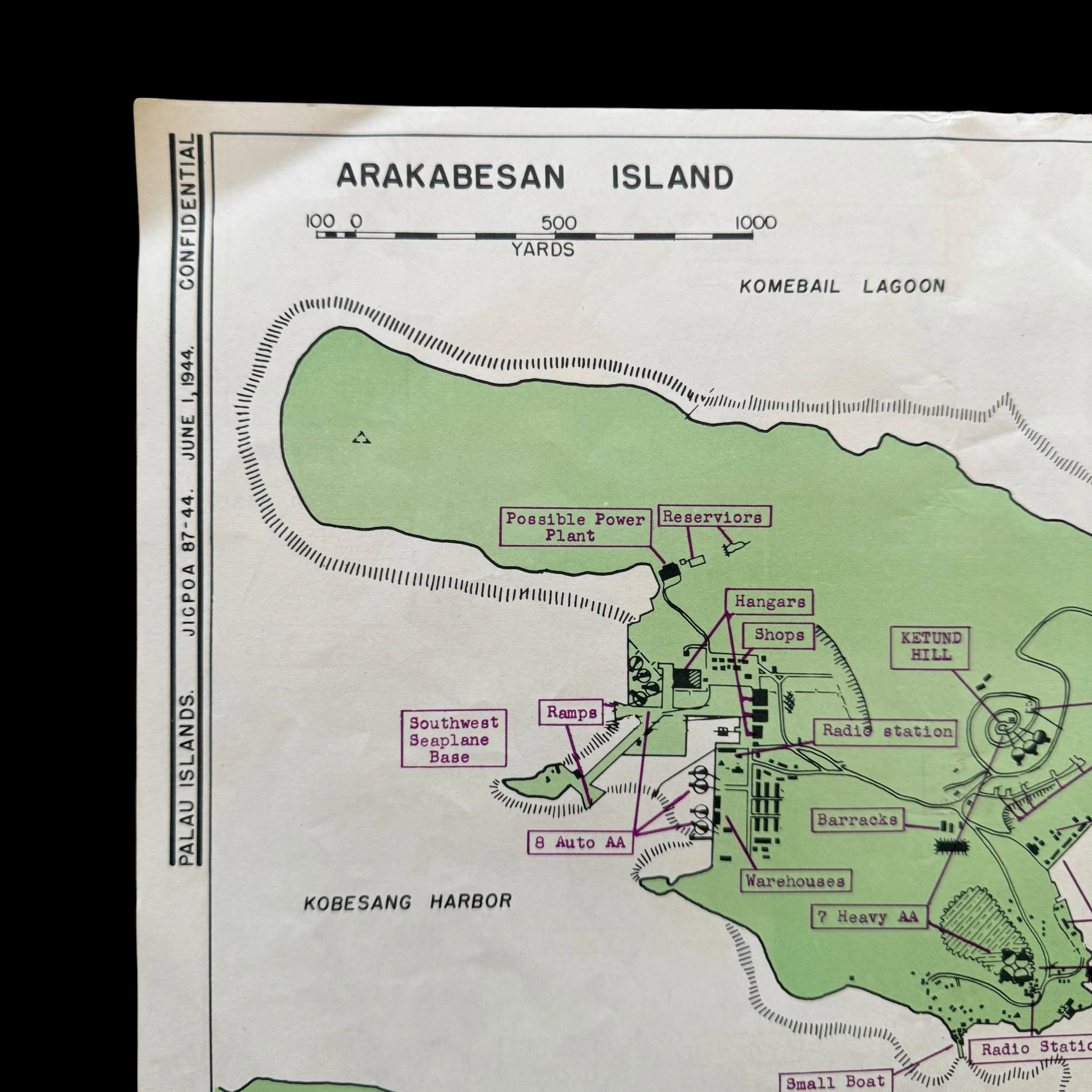
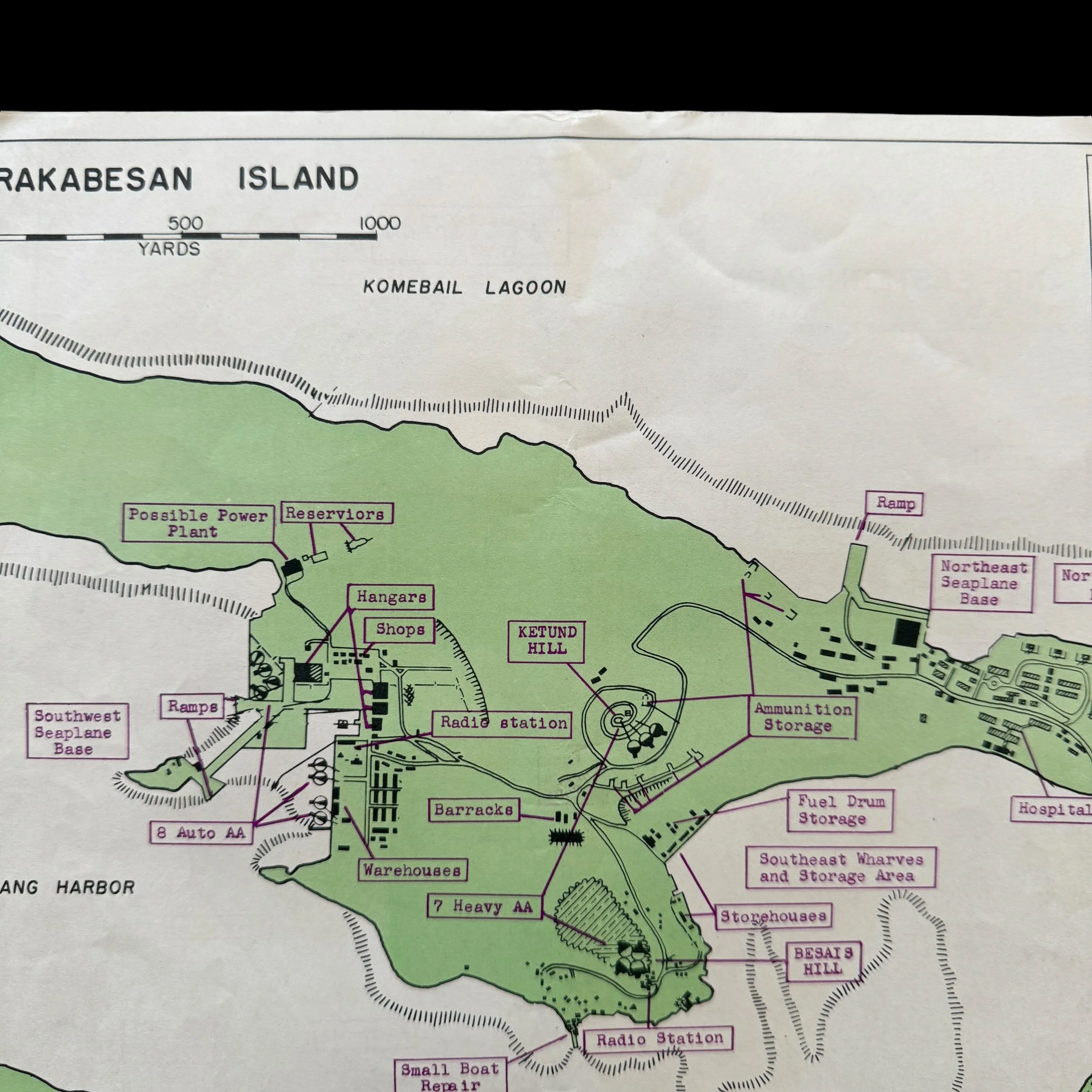
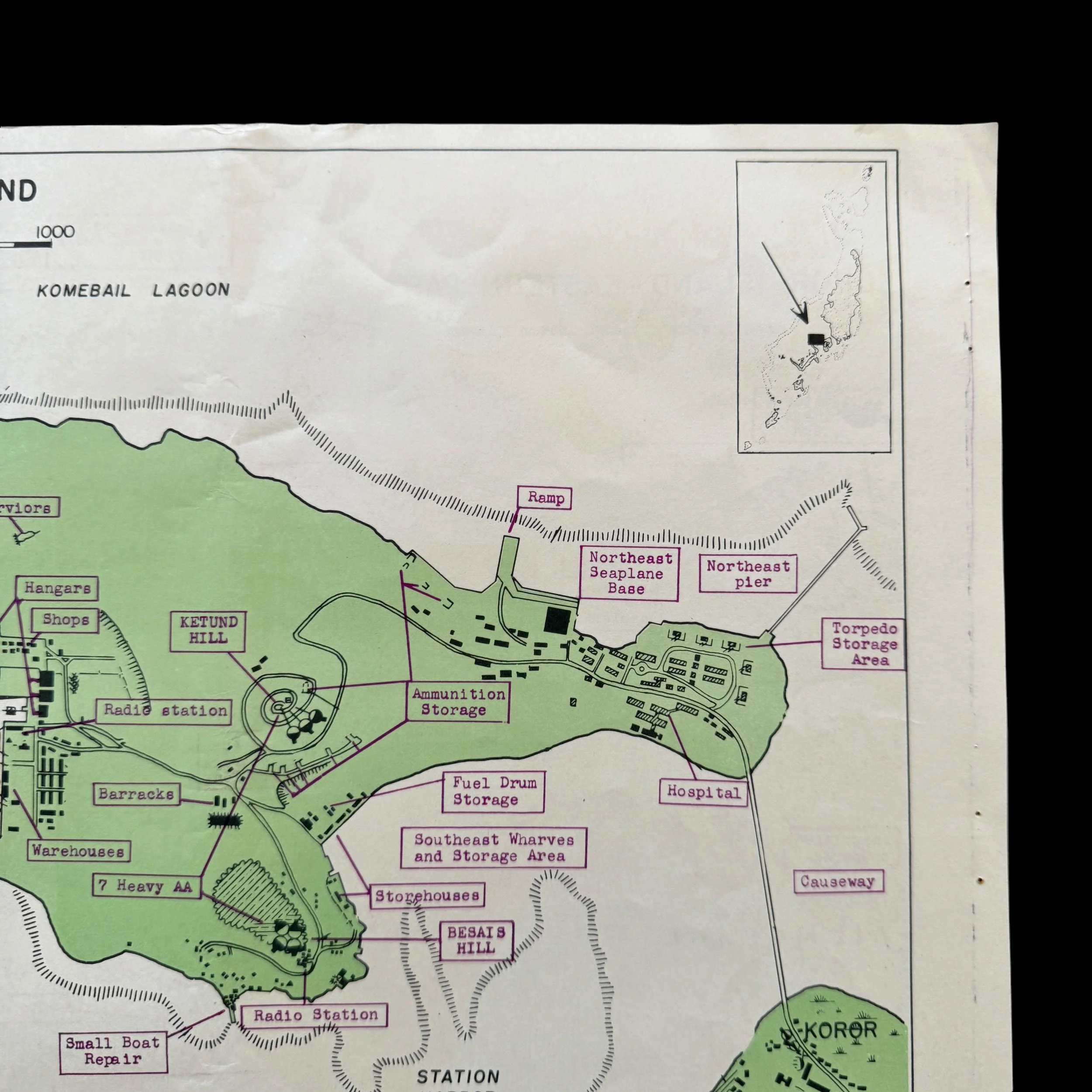
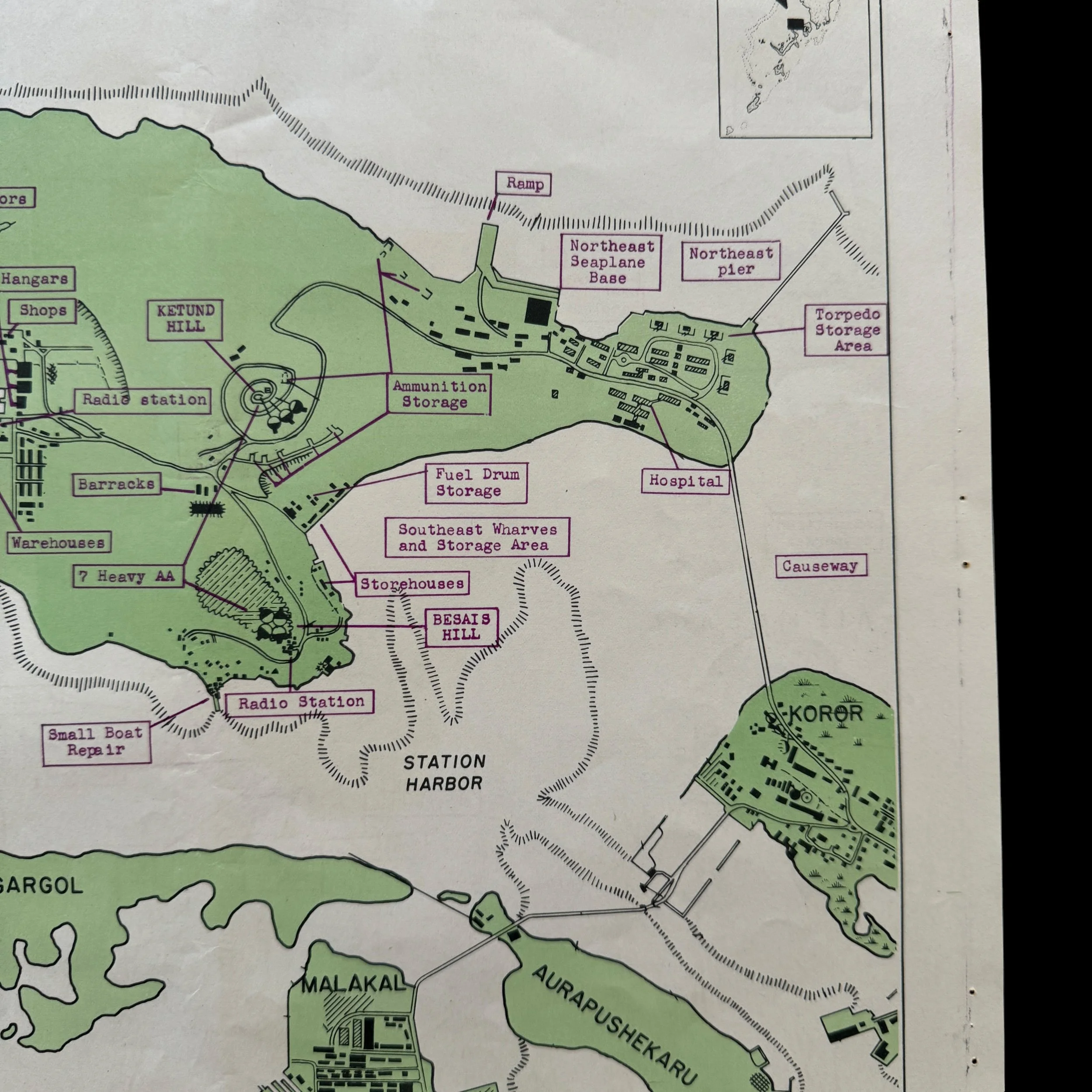


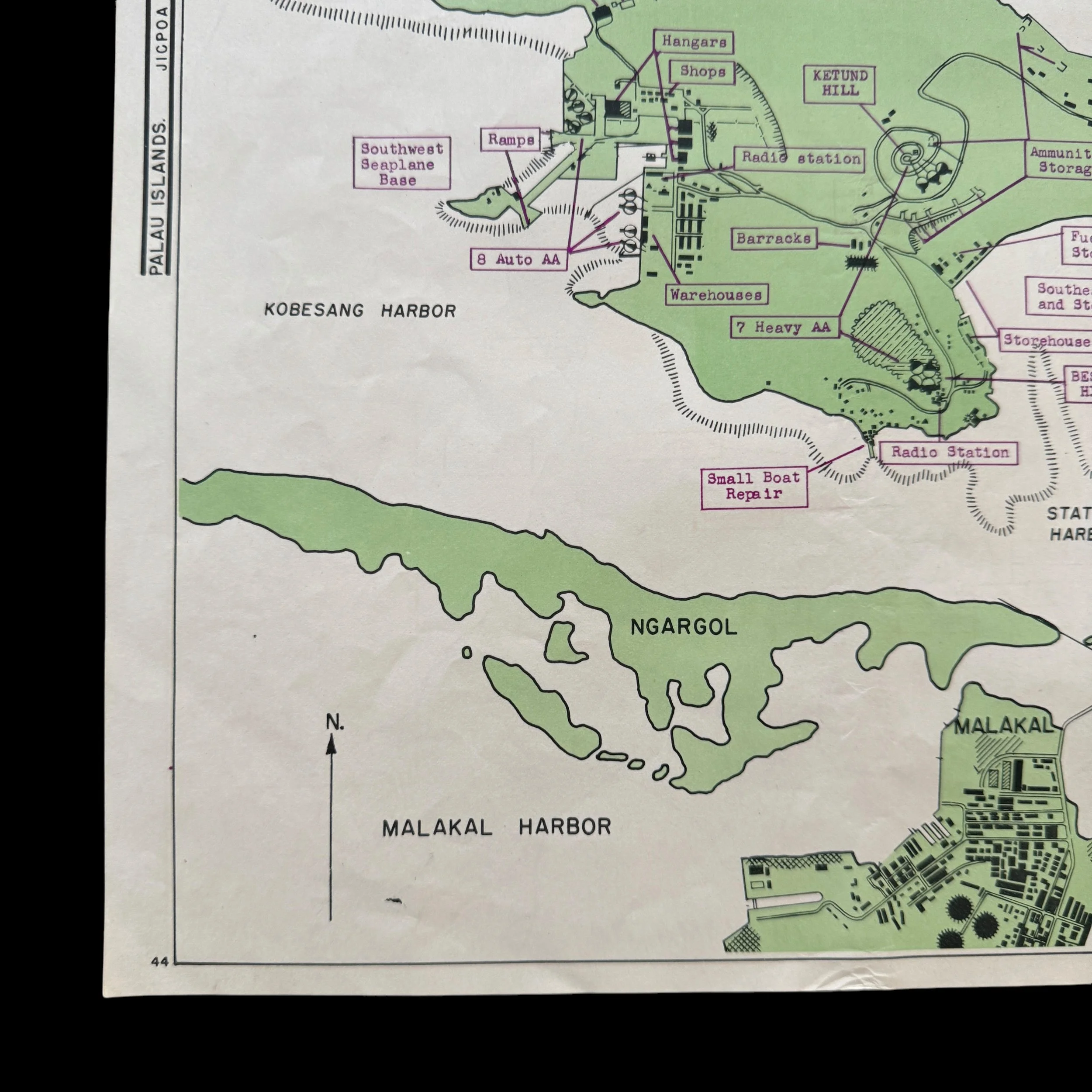
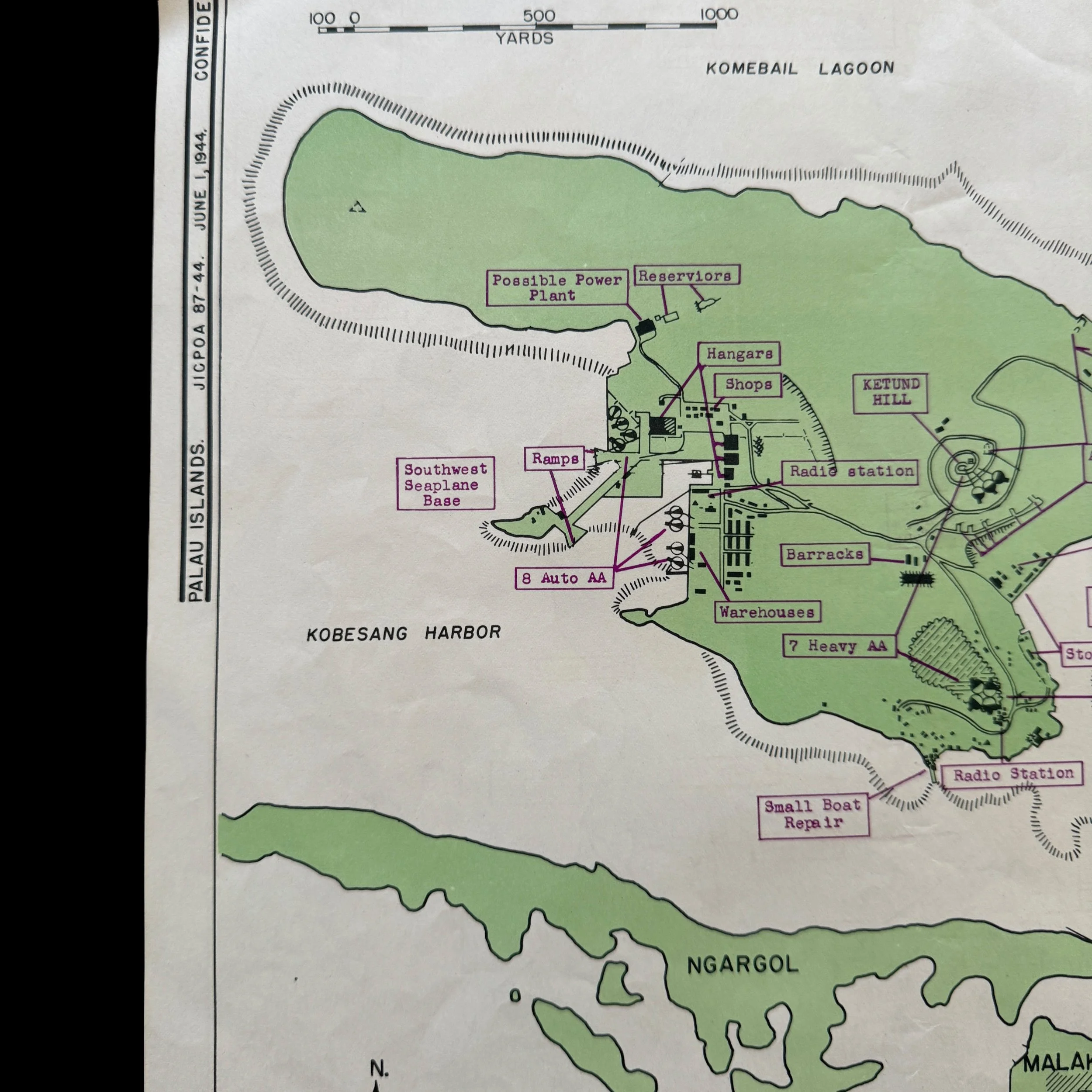

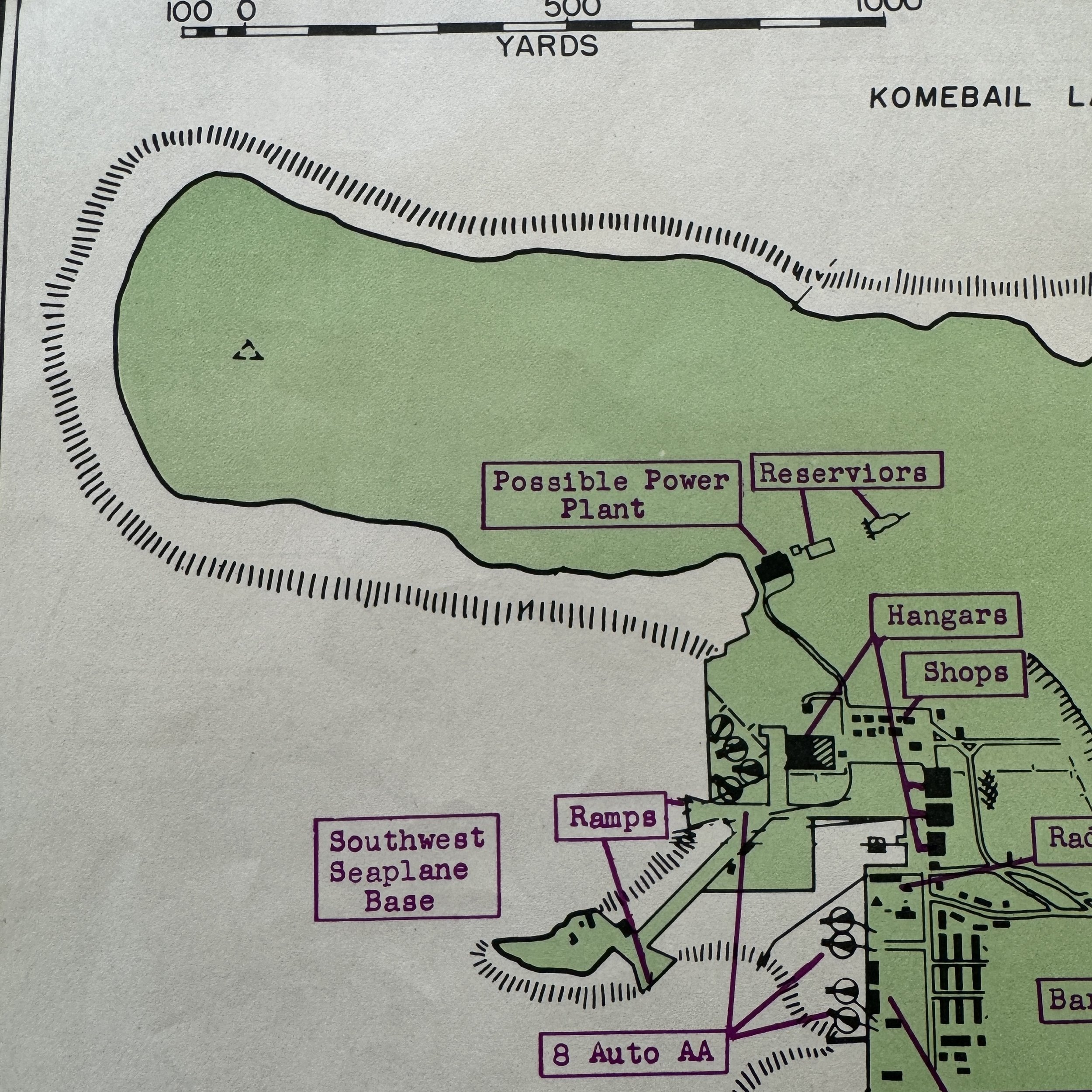





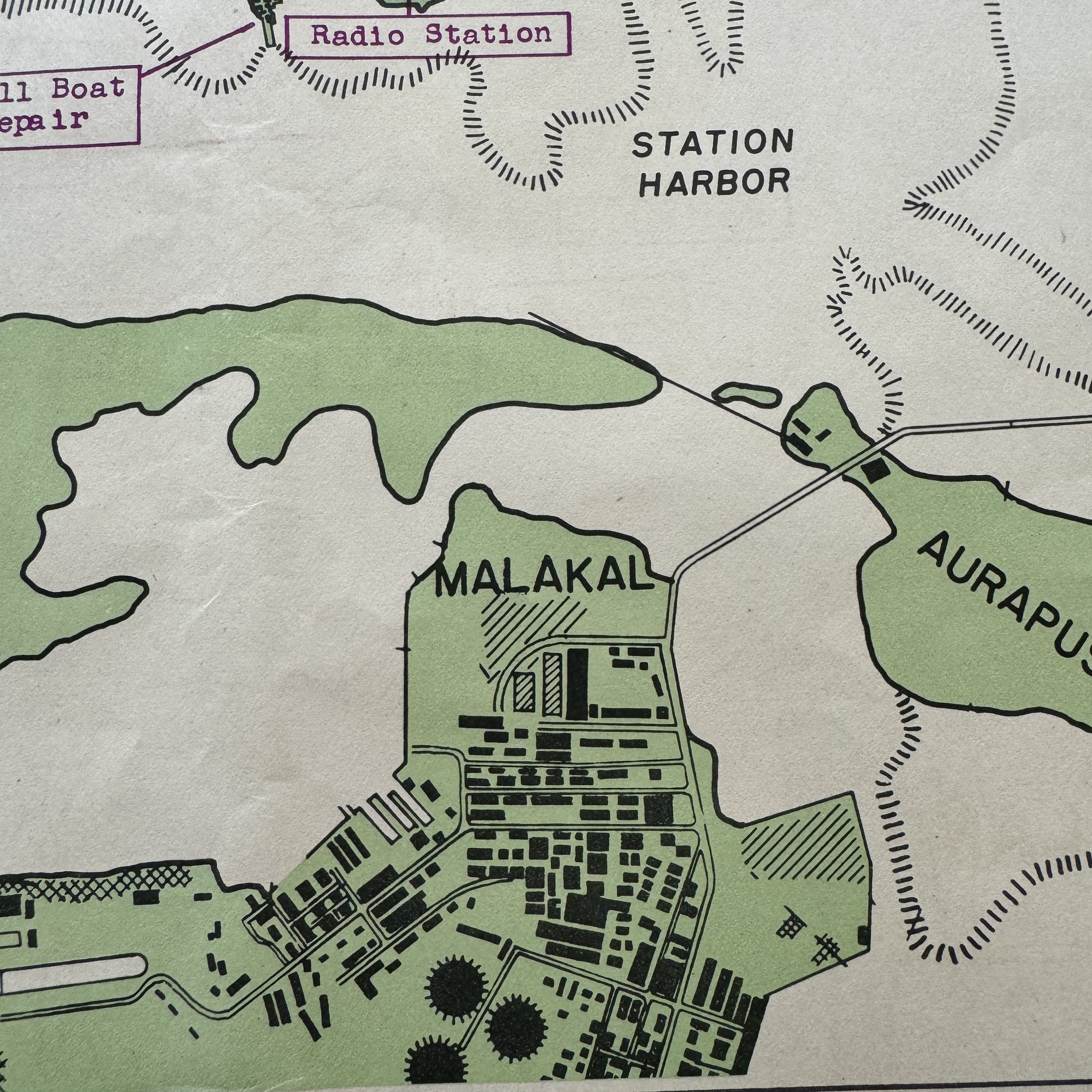


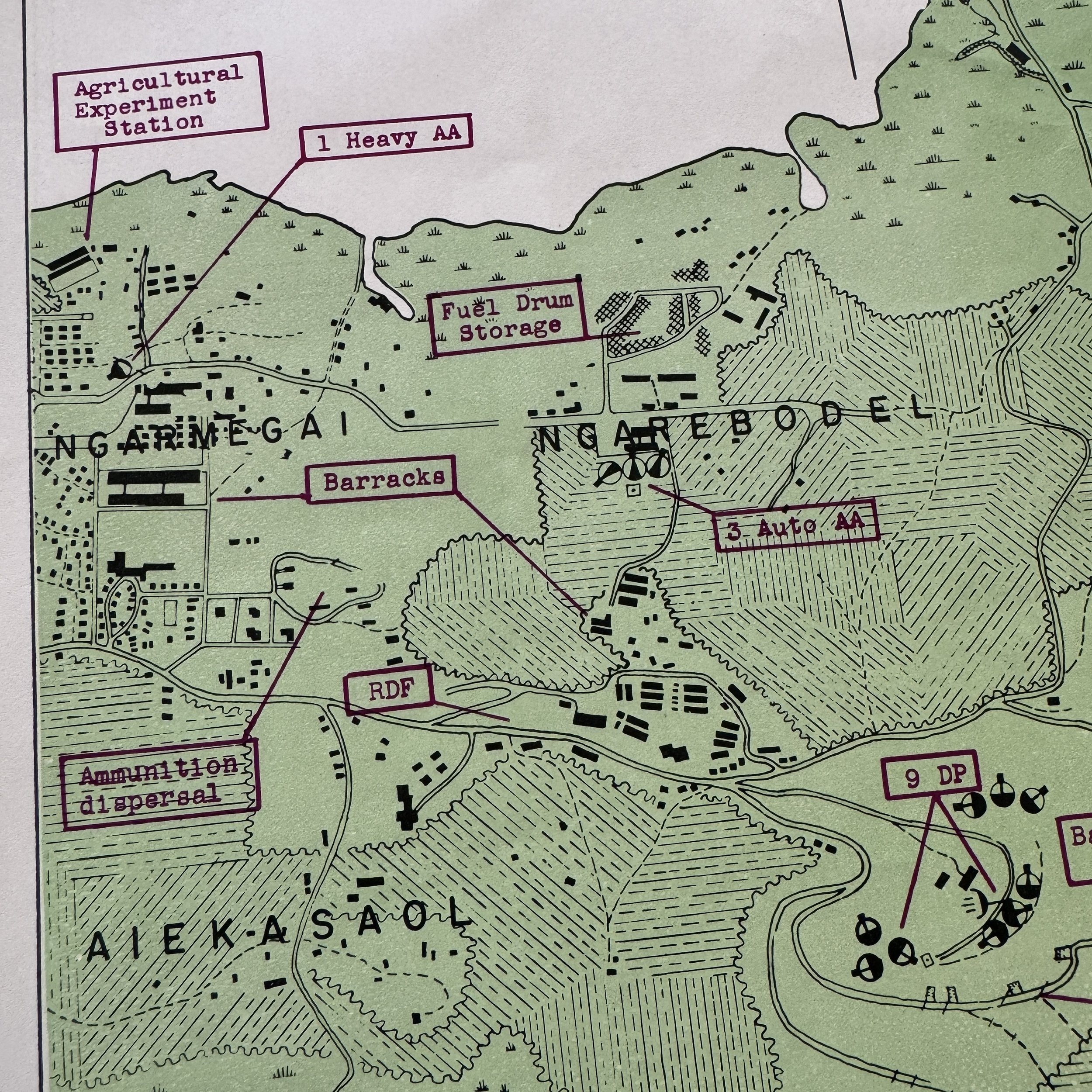
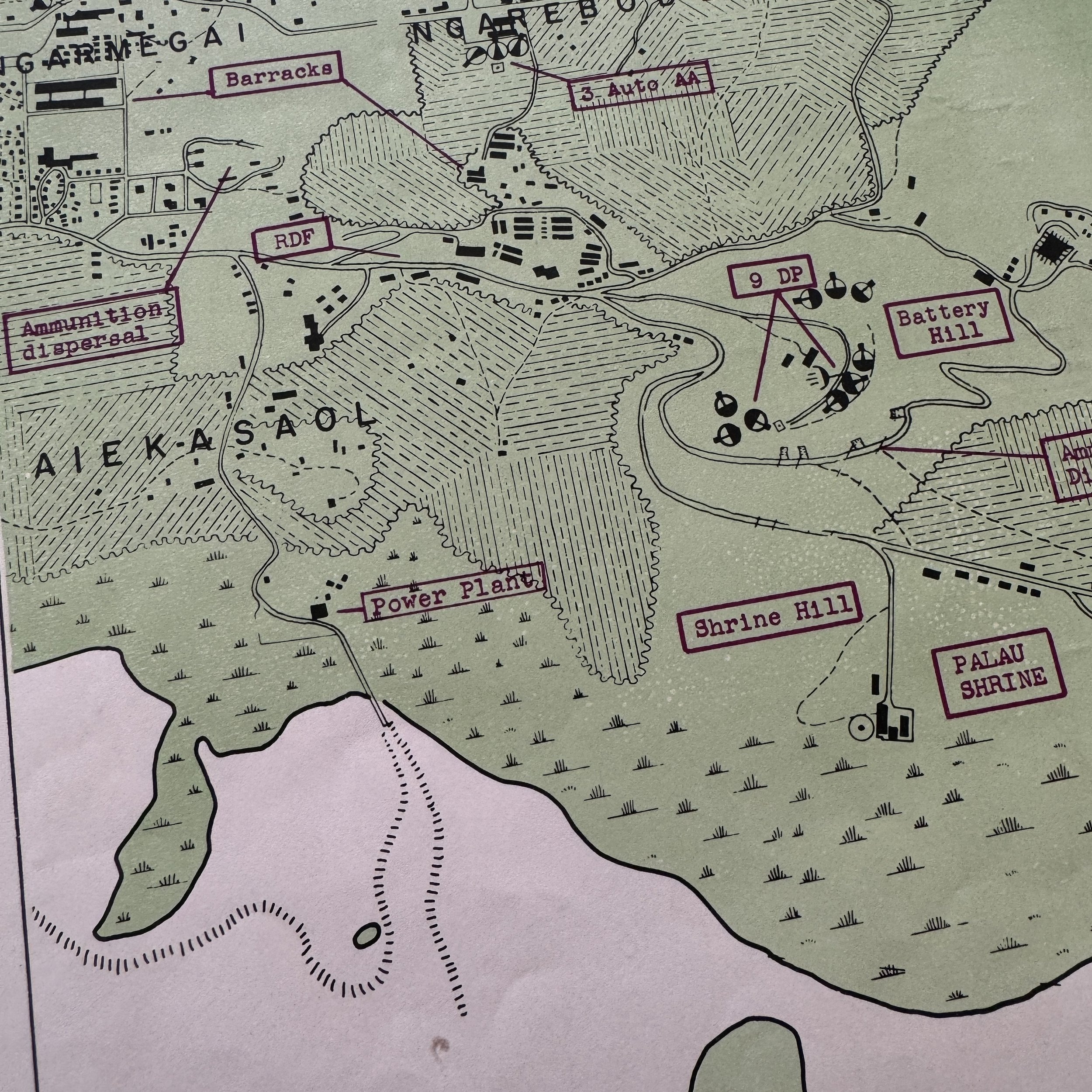




VERY RARE! WWII 1944 Operation Stalemate II - Palau Campaign (Koror & Arakabesan Islands) CONFIDENTIAL Combat Intelligence Invasion Maps (Double-Sided)
Comes with a hand-signed C.O.A.
Size: 13 x 14 inches
This incredibly rare and museum-grade WWII artifact is an original World War II Operation Stalemate II CONFIDENTIAL marked combat intelligence invasion maps (double-sided).
As per military classification guidelines at the time, it states, “It is recommended that "Top Secret" material - Operation Plans and Orders - be reclassified downward to "Secret or Confidential" prior to the start of an operation by a sufficient length of time to permit of adequate and timely distribution to commanders and officers and concerned. Only when in that area of combat theater can maps, reports, and plans be re-classified as “Restricted” to be used in combat and in the field.”
Dated June 1944 (3 months prior to the D-Day invasion of the Palua Islands) this map was a part of the largest amphibious operation in the Pacific to date, with more than 1,600 ships and craft and more than 800 aircraft deployed.
The Joint Intelligence Center Pacific Ocean Areas (JICPOA) played a pivotal role in producing military intelligence during World War II, particularly in the Pacific Theater. Established in 1943 under the command of Admiral Chester Nimitz, JICPOA was tasked with gathering, analyzing, and disseminating intelligence across the vast Pacific Ocean Area, covering millions of square miles of ocean and land. JICPOA’s multi-branch organization combined resources from the U.S. Army, Navy, Marine Corps, and other intelligence units, making it a hub for coordinated intelligence operations during the war.
One of JICPOA’s most significant contributions during WWII was in the preparation for amphibious assaults, such as the Battle of Peleliu in the Palau Islands, part of the larger Operation Stalemate II in 1944. JICPOA was responsible for producing detailed intelligence maps that were critical for the U.S. military's planning and execution of the invasion. These maps were created from aerial reconnaissance, submarine patrols, and photo interpretation, and they provided precise topographical details, enemy troop positions, and the layout of defensive installations, including the extensive cave networks that Japanese forces used for fortification.
For the Battle of Peleliu, JICPOA’s intelligence maps informed U.S. commanders about the island’s challenging terrain, fortifications, radio systems and more giving the U.S. forces a clearer understanding of what to expect. However, despite these detailed maps and military intelligence, the battle proved more difficult than anticipated due to the Japanese strategy of using fortified positions rather than a direct beach defense, leading to a protracted and costly engagement.
JICPOA’s ability to produce accurate intelligence maps underlined the importance of coordinated intelligence in modern warfare. The maps not only provided essential strategic insights but also saved lives by enabling U.S. forces to better prepare for the enemy’s defenses. In the Battle of Peleliu and other Pacific campaigns, JICPOA’s intelligence gathering and map production were critical in shaping the success of U.S. operations, contributing to the eventual Allied victory in the Pacific.
The Invasion of the Palau Islands: A Detailed Account of the Battle for Koror and Arakabesan Islands
The Palau Islands, located in the western Pacific, played a significant role in the broader Allied strategy during World War II. Positioned strategically between the Philippines and Japan's southern holdings, the islands were viewed as vital to both sides. The Palau campaign, known as "Operation Stalemate II," was a part of General Douglas MacArthur's overarching plan to retake the Philippines. The islands had been under Japanese control since the early 20th century and were heavily fortified by the time of the American invasion in 1944.
While the assault on Peleliu, part of the Palauan archipelago, is more widely known due to its intensity and high casualty rate, the battles for Koror and Arakabesan Islands are equally significant. These islands were crucial for establishing logistical bases and neutralizing Japanese resistance across the entire Palauan region.
Strategic Importance of the Palau Islands
By mid-1944, the United States military had shifted its focus toward isolating Japan and its territories in the Pacific. The Palau Islands were considered a key target for this strategy due to their proximity to the Philippines and their status as part of Japan's defense perimeter. The Japanese had heavily fortified the islands, particularly Koror and its surrounding areas, due to their military and economic significance. Koror, the administrative center of the Palauan archipelago, housed critical infrastructure, including airfields, supply depots, and command centers.
For the United States, seizing control of Koror and the nearby islands was a prerequisite for launching operations against the Philippines and cutting off Japanese supply lines. Success in Palau would also eliminate a potential staging ground for Japanese counterattacks. As a result, Operation Stalemate II was initiated, with the primary objective being the capture of Peleliu, but secondary objectives included neutralizing the remaining islands in the Palauan chain, including Koror and Arakabesan.
The Initial Stages of the Campaign
The invasion of the Palau Islands began on September 15, 1944, with the assault on Peleliu by the 1st Marine Division. While Peleliu was the primary focus, the entire Palau chain was to be secured by the U.S. forces to prevent Japanese counterattacks. The U.S. strategy was divided into three phases: the capture of Peleliu, the neutralization of the nearby island of Angaur, and the eventual assault on Koror, Arakabesan, and other smaller islands.
Unlike Peleliu, which saw a fierce and prolonged battle, the fighting on Koror and Arakabesan was more methodical but no less critical. These islands, while less fortified than Peleliu, still presented significant challenges to U.S. forces. The terrain was rugged, with dense jungle cover and steep hills, offering the Japanese defenders natural defensive advantages.
Battle of Koror Island
Koror Island was the administrative hub of the Palauan archipelago and housed important military installations, including airfields and supply depots. The Japanese had established strong defensive positions, expecting a major assault. However, after the fierce resistance encountered on Peleliu, the U.S. commanders opted for a different strategy on Koror. Rather than a full-scale amphibious landing, the U.S. forces employed a combination of aerial bombardment and naval gunfire to soften Japanese defenses before committing ground troops.
On October 6, 1944, the 81st Infantry Division, which had previously been engaged in the assault on Angaur, landed on Koror. By this time, many of the Japanese forces had already retreated into the interior of the island, adopting guerrilla tactics to delay the American advance. The U.S. forces, using lessons learned from earlier Pacific campaigns, cautiously advanced through the dense jungle and ridges that characterized the island's landscape. The primary challenge for the Americans was not just the entrenched Japanese forces but also the natural terrain that made it difficult to move heavy equipment and supplies.
The fighting on Koror was sporadic, with pockets of resistance scattered across the island. The Japanese defenders, numbering around 6,000, had fortified key positions but lacked the manpower and resources to mount a prolonged defense. After several days of intense fighting, the U.S. forces had gained control of most of the island's strategic points, including the airfields. The remaining Japanese forces retreated into the rugged hills of the island, where they continued to fight a guerrilla-style campaign for weeks.
Despite the challenges, the battle for Koror Island was successful from a strategic standpoint. By securing the island, U.S. forces eliminated a key Japanese base in the region and gained control of important infrastructure that would be crucial for the next phase of the war. The airfields on Koror were particularly valuable for launching further operations against the Philippines and other Japanese-held territories in the Pacific.
Battle of Arakabesan Island
Arakabesan Island, located just southwest of Koror, was another critical target for the U.S. forces during the Palau campaign. Like Koror, Arakabesan housed important Japanese military installations, including supply depots and communication centers. The island was also a key logistical hub for the Japanese defense of the entire Palauan archipelago.
The battle for Arakabesan began shortly after the U.S. forces secured Koror. On October 10, 1944, elements of the 81st Infantry Division were tasked with capturing the island. The Japanese defenders, although fewer in number than on Koror, had established strong defensive positions in the island's jungle and hills. The U.S. forces, having learned from their experiences on Koror, employed a combination of artillery and naval gunfire to weaken Japanese defenses before launching a ground assault.
The terrain on Arakabesan, like Koror, presented significant challenges to the advancing U.S. troops. The island's dense jungle cover and rugged hills made it difficult for the Americans to move quickly and exposed them to ambushes and sniper fire from the Japanese defenders. Despite these challenges, the U.S. forces advanced steadily, using flamethrowers and grenades to clear out Japanese bunkers and defensive positions.
One of the key objectives on Arakabesan was the capture of the island's supply depots, which were crucial for the Japanese defense of the entire Palauan chain. The U.S. forces were able to secure these depots after several days of fighting, effectively cutting off Japanese supply lines and weakening their overall defensive capabilities.
By mid-October, the battle for Arakabesan was effectively over. The remaining Japanese defenders, like those on Koror, retreated into the island's interior and continued to fight sporadically, but they were no longer capable of mounting a significant resistance. The U.S. forces had secured control of the island, eliminating another key Japanese stronghold in the region.
Aftermath and Significance
The capture of Koror and Arakabesan Islands marked a significant victory for the U.S. forces in the Pacific. While the fighting on these islands was not as intense or prolonged as the battle for Peleliu, their strategic importance cannot be overstated. By securing these islands, the U.S. forces gained control of critical infrastructure and eliminated Japanese bases that could have been used to launch counterattacks against future Allied operations.
Moreover, the battles for Koror and Arakabesan demonstrated the effectiveness of the U.S. military's evolving tactics in the Pacific. The use of combined arms, including artillery, naval gunfire, and air support, allowed the U.S. forces to neutralize Japanese defenses without committing large numbers of ground troops to direct assaults. This approach helped minimize American casualties and ensured the success of the overall campaign.
The capture of the Palau Islands also paved the way for the U.S. invasion of the Philippines, which began in October 1944. With the Palauan chain secured, the U.S. forces were able to launch operations against Japanese positions in the Philippines and continue their advance toward Japan's home islands.
In conclusion, the battles for Koror and Arakabesan Islands were critical components of the broader Palau campaign and the Pacific War. While they may not have garnered as much attention as the battle for Peleliu, they were nonetheless crucial for the success of the Allied strategy in the region. The capture of these islands weakened Japanese defenses and provided the U.S. forces with the logistical support necessary for future operations in the Pacific. Ultimately, the invasion of the Palau Islands, including the battles for Koror and Arakabesan, played a vital role in the Allied victory in the Pacific War.